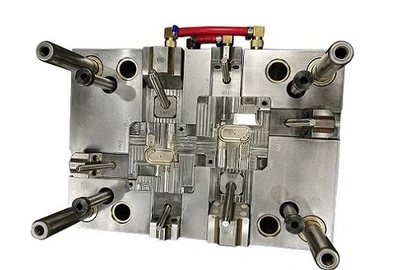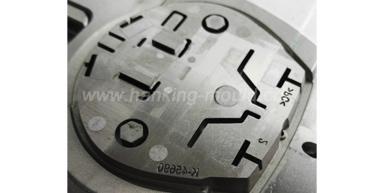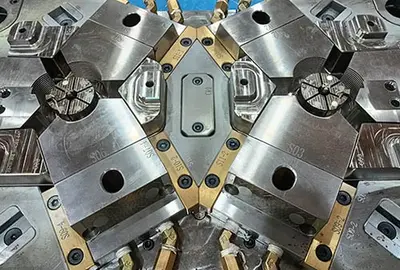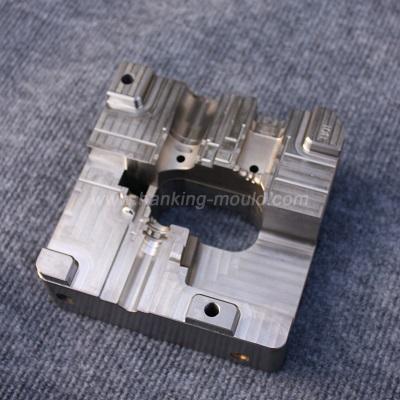

In the fast-paced world of manufacturing, every second counts, and efficiency is key to success. By unraveling the mysteries behind cycle time and its various stages, we hope to equip you with the knowledge to enhance your plastic injection molding processes. In this article, we will explore the calculation of injection molding cycle time, the four stages of the injection molding cycle, and the significance of filling time. Let's dive in!
What is the Cycle Time for Plastic Injection Molding?
Before we delve into the intricacies of calculating injection molding cycle time, let's first define what it is and understand its significance. Cycle time refers to the total time it takes to complete one manufacturing cycle, from the start of one part through to the completion of the next identical part.
Reducing cycle time is essential for boosting productivity and maximizing output. A shorter cycle time means more parts can be produced in a given timeframe, resulting in increased efficiency and cost-effectiveness. It enables manufacturers to meet production targets, maintain competitive lead times, and deliver quality products to customers in a timely manner.
How to Calculate Injection Molding Cycle Time?
Calculating injection molding cycle time involves determining the time required for each stage of the injection molding process and summing them up. Let's break down the calculation into a step-by-step guide:
1. Clamping Time Estimation:
The clamping stage involves securely closing the mold around the plastic component. The clamping time can be estimated by considering factors such as the size and complexity of the mold, the mold closing speed, and any additional time required for mold protection mechanisms. By accurately assessing these factors, you can determine the clamping time required for optimal mold closure.
2. Injection Time Determination:
The injection stage is where molten plastic is injected into the mold cavity to form the desired component. The injection time depends on factors like the shot size, the plastic material viscosity, and the required fill pressure. By considering these parameters and the specific requirements of your production, you can calculate the injection time necessary for complete molten plastic flow into the mold.
3. Cooling Time Importance:
The cooling stage is crucial for maintaining the quality and integrity of the plastic component. The cooling time differs based on the material used, part thickness, and injection plastic mold design. It is essential to ensure adequate cooling time to prevent premature ejection and potential defects in the final product.
4. Minimizing Ejection Time:
The ejection stage involves removing the solidified component from the mold. Minimizing ejection time is key to maximizing production efficiency. By optimizing ejection mechanisms, such as the use of ejector pins or air blasts, you can reduce the time required for component ejection and efficiently move on to the next cycle.
Once you have determined the individual times for each stage of the injection molding cycle, simply add them together to obtain the total cycle time. This overall cycle time estimation enables you to fine-tune your production processes for optimal efficiency.
How to Calculate Injection Molding Cycle Time?
Understanding the injection molding cycle involves comprehending its four main stages - clamping, injection, cooling, and ejection. Let's have a closer look at each of these stages:
Clamping: Securing the Mold
The clamping stage is responsible for holding the mold halves together during the injection molding process. It ensures a secure enclosure for the molten plastic. The clamping time is determined by the complexity of the mold design, its size, the closing speed, and any additional safety features. Accurately estimating the clamping time is crucial for achieving optimal mold closure without risking any damage to the mold or part quality.
Injection: Filling the Mold Cavity
The injection stage involves injecting molten plastic into the mold cavity under controlled pressure and flow rate. The injection time is dependent on the plastic material being used, the desired shot size, and the required fill pressure. Calculating the injection time precisely enables complete filling of the mold cavity and ensures the final part's dimensional accuracy and quality.
Cooling: Maintaining Component Integrity
The cooling stage allows the molten plastic to solidify and take the desired shape. The cooling time varies based on factors like the plastic material, the part thickness, and the mold design. Sufficient cooling time is essential to prevent premature ejection and minimize the risk of defects such as warping or sink marks in the final product.
Ejection: Removing the Component
The ejection stage marks the end of one cycle and the preparation for the next. Ejection involves the removal of the solidified component from the mold. Minimizing ejection time helps boost production efficiency. Optimizing ejection mechanisms, such as ejector pins or air blasts, ensures swift and reliable removal of the component, reducing downtime between cycles.
The Four Stages of the Injection Molding Cycle:
Filling time plays a crucial role in injection molding and helps ensure a quality end product. Let's dive into how to calculate filling time and its significance:
The Purpose of Filling Time
Filling time refers to the time it takes for molten plastic to completely fill the mold cavity during the injection stage. It is a critical parameter that impacts the part's quality, dimensional accuracy, and overall production efficiency. Accurate filling time estimation allows manufacturers to optimize their injection molding processes and avoid issues like short shots or overfilling.
Calculating Filling Time
Calculating filling time involves considering key parameters, including the melt flow rate, mold volume, and desired part thickness. By employing a mathematical formula that takes into account these factors, you can estimate the filling time required for complete mold cavity filling. It is essential to fine-tune this calculation based on your specific plastic material and mold characteristics.
Understanding the filling time during plastic injection molding enables you to fine-tune process parameters such as injection speed, melt temperature, and pressure, leading to enhanced production efficiency and improved part quality.
Understanding Filling Time for Plastic Injection Molding:
Optimizing your plastic injection molding production starts with a thorough understanding of the injection molding cycle time and its various stages. By accurately calculating cycle time and filling time, you can fine-tune your processes, minimize production inefficiencies, and deliver high-quality products to your customers consistently.
Remember, reducing cycle time and optimizing filling time require a balance between speed, quality, and overall production goals specific to your manufacturing operations. By implementing the knowledge shared in this article, you can embark on a journey to revolutionize your plastic injection molding processes and drive improved efficiency and competitiveness for your business.






 Call us on:
Call us on:  Email Us:
Email Us:  1st Floor, Block1, No.3 Beiting Road, Houting Community, ShaJing Street, Bao'An District, Shenzhen City, Guangdong Province, China
1st Floor, Block1, No.3 Beiting Road, Houting Community, ShaJing Street, Bao'An District, Shenzhen City, Guangdong Province, China